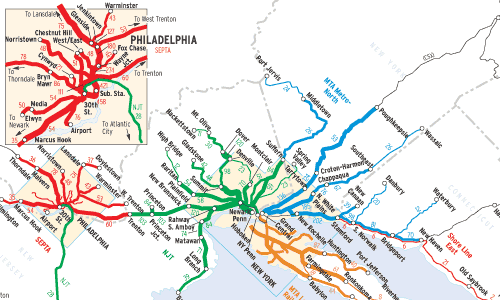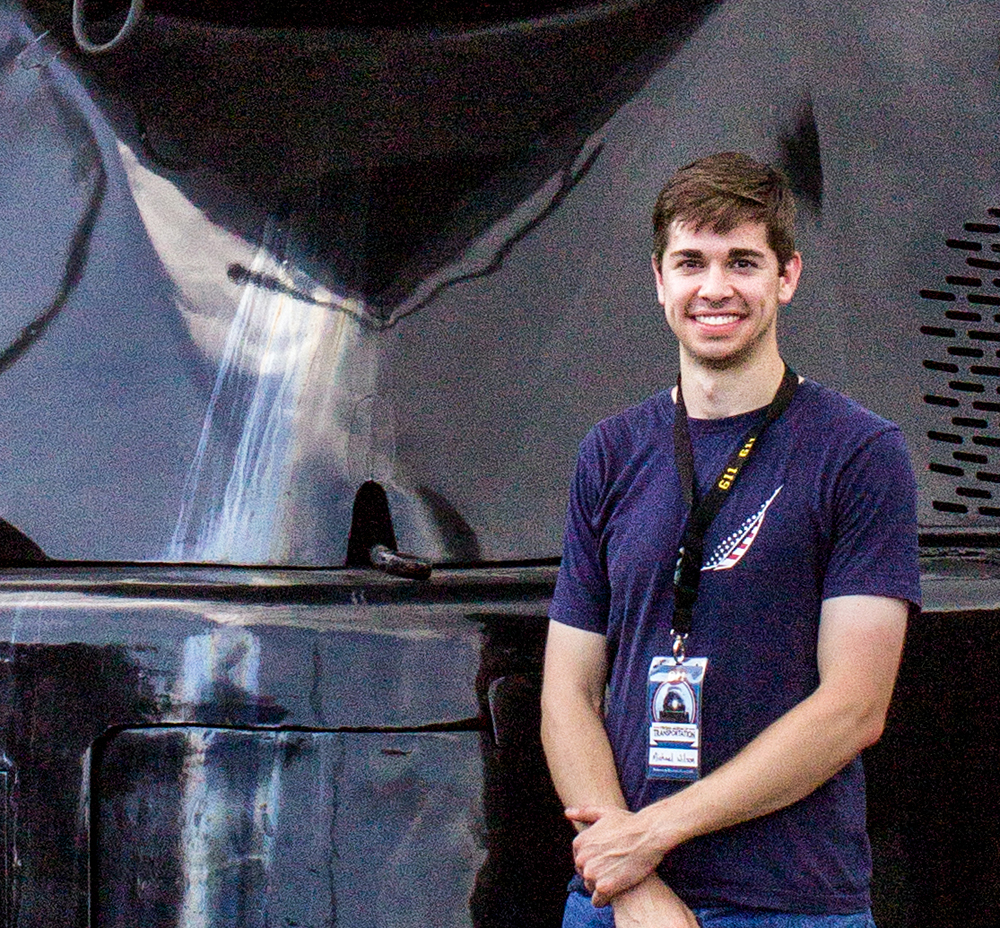Think you’re in a hurry to get to work? The 3,170 trains on this map make it their business to hustle, with a purposefulness matched only by the riders packed aboard their coaches.
This is a snapshot of the commuter trains that run every weekday in the Northeast. Without them, some of the biggest cities in the U.S. would grind to a halt. The tabulations come from public timetables in effect during March 2005. Only revenue moves are shown, meaning that some lines see even more trains, like non-scheduled “flip back” moves to reposition equipment for the next rush.
With apologies to Union Pacific’s triple-track in Nebraska and BNSF’s Transcon, putting 100 trains a day on a main line is child’s play in the East! Granted, commuter trains all behave identically, and pretty much look the same. They need to, if they’re to race against time twice a day. But the sheer numbers are staggering. SEPTA squeezes all 458 of its weekday trains through a four-track tunnel between Philadelphia’s Suburban and 30th Street stations; MBTA uses two Boston stations t handle its 465 trains; Metro-North keeps Grand Central Terminal humming with 529 trains a day. and runs 98 more on its outer branches and west of the Hudson River.
Perhaps the biggest surprise? New Jersey Transit has surpassed the Long Island Rail Road in weekday train volumes. Getting the most out of big-ticket projects like the Secaucus Junction transfer station and Montclair Line electrification, NJ Transit now fields 751 weekday trains — 20 more than LIRR (known since forever as the nation’s busiest railroad). That NJT figure is a little disingenuous, though, since it includes 84 trips made by a one-car “dinky” on the 3-mile Princeton branch. Take out those runs, and the Long Island Railroad is comfortably back on top.
Some of the busiest lines are tenants on Amtrak’s Northeast Corridor (except New Rochelle-New Haven, where Amtrak is the tenant). In the 458 miles between Boston and Washington, only three segments lack commuter trains: Providence, R.I.-New London, Conn. (19 miles), and Newark, Del.-Perryville, MD. (20 miles). Conversely, some Amtrak trains function as commuter services, notably the 20 weekday Keystone Service trains between Philadelphia and Harrisburg, Pa., and six New York-Philadelphia Clockers.
The Northeast’s commuter lines are an industry success story. Twenty years ago, Virginia Railway Express and Shore Line East did not even exist, and NJ Transit was running less than half the 287 tains it puts today through the 95-year-old Hudson River tunnels. As suburbs have pushed farther out, commuter agencies have added routes and services to keep pace with their customer base. MARC entered Frederick, Md., in 2001; Metro-North extended its Harlem Line to Wassaic in 2000; and the MBTA added 93 miles in the mid-1990s, reaching Worcester and Newburyport, and opening its Old Colony lines to Plymouth, Kingston, and Middleboro/Lakeville (which hadn’t seen a train since 1959).
Commuter services require an intense capital investment: equipment to handle crowds; track and signaling t move trains safely on mercilessly tight headways; big-city terminals an and suburban park-and-rides; and enough employees to keep the system running like a well-oiled machine. Public commuter agencies can see beyond the trains’ red ink — to the financial benefits that accrue from having a healthy business district, flourishing residential areas, and convenient tourist access.
There are 8 million stories in the naked city, after all, and some begin with a train ride.
Railroads included in this map:
Amtrak; Long Island; Maryland Rail Commuter; Massachusetts Bay Transportation Authority; Metro-North; New Jersey Transit; Shore Line East; Southeastern Pennsylvania Transportation Authority; Virginia Railway Express















Just think if all those people had to drive to work, or even take busses. In NYC the bus terminals are jammed full, even with the trains. Think of it.